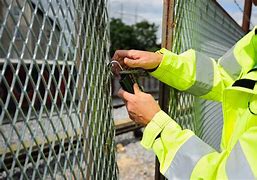Service Ad Title
Ad Posted Date
Service Type
About Service
1. Alarm Monitoring and Detection
Centralized Monitoring: Have a centralized monitoring station that continuously oversees alarms from various sensors and devices.
Automated Alerts: Ensure that alarms trigger automated alerts to relevant personnel via SMS, email, or push notifications.
2. Initial Assessment
Verify the Alarm: Confirm if the alarm is genuine or false. Use remote monitoring tools or on-site cameras to check the situation.
Determine the Type: Identify the type of alarm (fire, intrusion, equipment failure, etc.).
3. Immediate Response Actions
Activate Response Protocols: Follow the predefined response protocols for the specific type of alarm.
Notify Key Personnel: Inform the necessary staff and stakeholders about the alarm and the initial assessment.
Evacuate if Necessary: If the alarm is critical (e.g., fire or gas leak), initiate an evacuation process immediately.
4. On-Site Response
Dispatch Security/Response Team: Send a trained response team to the site to investigate and manage the situation.
Assess the Situation: The on-site team should assess the situation, verify the cause of the alarm, and take appropriate action (e.g., firefighting, detaining intruders).
Safety Measures: Ensure that all response actions prioritize the safety of personnel and property.
5. Communication and Coordination
Update Communication Channels: Maintain clear and consistent communication with all parties involved, including emergency services if required.
Coordinate with External Agencies: Work with police, fire services, or medical services as needed.
6. Resolution and Recovery
Neutralize the Threat: Take necessary actions to neutralize any threats or resolve issues causing the alarm.
Assess Damage: Evaluate any damage or impact and document findings.
Restoration of Services: Ensure that services are restored to normal operation as quickly as possible.
7. Reporting and Documentation
Incident Report: Prepare a detailed incident report documenting the alarm, response actions taken, and outcomes.
Log Data: Record all relevant data, including timestamps, personnel involved, and communication logs.
8. Review and Improvement
Post-Incident Review: Conduct a review meeting to analyze the response and identify any areas for improvement.
Update Protocols: Revise alarm response protocols based on the lessons learned to enhance future responses.
Training and Drills: Regularly train staff and conduct drills to ensure preparedness for various alarm scenarios.
9. Preventive Measures
Regular Maintenance: Perform regular maintenance and testing of alarm systems to ensure they function correctly.
Upgrade Systems: Update and upgrade alarm systems and technology to enhance detection and response capabilities.
10. Community and Stakeholder Engagement
Inform Stakeholders: Keep stakeholders informed about alarm response procedures and any significant incidents.



Add a review